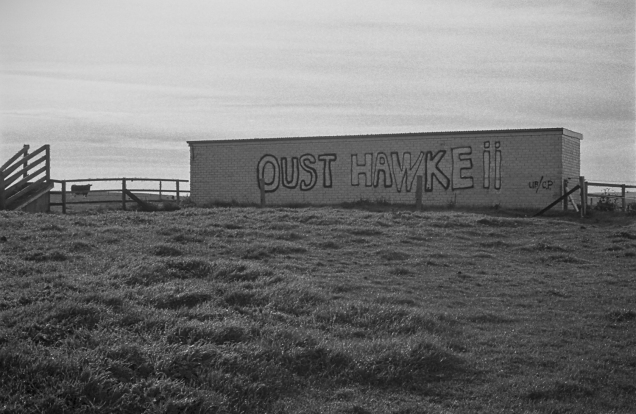In the 1980s I started work on an MA consisting of photographs and a dissertation in the philosophy department at Flinders University of South Australia under Brian Medlin. The MA project was a critique of capitalist industrialization, and it was meant to be a politics and art type project that associated realism with some form of explanatory power or grasp of social truth.
I never completed the MA. I aborted it and upgraded to a PhD in continental philosophy about the need for philosophy to return to, and be a part of, everyday life. The photography was put in cold storage. Returning to the archive now means that this is a photography is looking back at the past from the present—history is always written from the present.
The MA was at a time when modernists celebrated both the liberation of visual art from realist representation as a realisation of art’s true vocation and celebrated the freedom achieved through art. Modernism replaced the autonomy of Descarte’s thinking subject from nature, society and history with the artistic subject as a fictive being within the play of visual language.
Collapse the difference between signifier and signified– signs are the new reality—condemns the world to textual play, thereby surrendering subjectivity to the prison-house of language and art to textual play. Realism was seen as an exhausted pictorial tradition, and it was reduced to a caricatured ‘straw man’ version of the form and its association with a simple referential naivety – the transparent window on a stable world–with its omniscient photographer as narrator. This was part of the broad drift to problematize or reject photography as a realistic and documentary form towards elaborate photographic constructs or photographic tableaus. Realism was taboo and documentary could only be deconstructed.

One strand in the politics and art debate held that art and aesthetic concerns should be subordinated to political imperatives, or indeed that
aesthetic value is reducible to social and political value. Raymond Williams’ literary theory rejects the concepts of ‘the aesthetic’ and ‘aesthetic value’ without replacing them with alternative concepts. Another strand was held Herbert Marcuse who argued that the subversive potential of art lies only in the ‘aesthetic form’ which liberates Eros and celebrates human subjectivity in a way which transcends every ‘realistic’ political programme.
Within this context the intellectual content of the abandoned MA project was provided by the Romantic, pre-Marxist critique of early industrial capitalism (eg., the British tradition of Coleridge, Carlyle, Ruskin and William Morris that Raymond Williams had recovered in his Culture and Society). Culture was the name for certain pre- capitalist social and cultural values that were lost in industrial capitalism. Lukacs’ early The Theory of the Novel (1916) spells this out. He describes the social world of modernity as confronting its members as a ‘second nature’ of senseless conventions, so that they are, paradoxically, homeless in the world that should be their home. Under capitalism the social world comes to appear as an object externally related to the self living in that world.
The Theory of the Novel is a theorisation of alienation, and it laments the loss of a meaningful human community (represented by ancient Greece), or human society as a ‘totality’. The Greek epic is less a genre among others than it is the expression of a certain social form of life – a ‘people’ – and the poetry of a common world. In modernity, by contrast, forms of intelligibility and meaning are no longer authorised by tradition and custom; there is a disharmony disjunction between form and life; and artistic freedom expresses itself in terms of an ironic subjectivity.
Ours is a secularised, disenchanted modern world with its fragmented and individualistic (non-) community. The universal primacy of individual experience is the ideology of modern times, in that subjectivity proclaims itself to be the only authentic substance of experience and volition. Individualism is the hegemonic form of the social in capitalist modernity.
Most of the English Romantic critics of industrial capitalism were poets and writers, but their sources were the philosophical writings of the Jena Romantics. The latter’s writings about modern poetry and the novel came to stand in for an idea of modern art in general, with its freedom from generic conventions and grounded in its newness and individuality. The structure of the modern artwork is self-determining and autopoietic.
Lukács held that in modernity the prose of the world becomes specifically the domination of capitalist prose over the inner poetry of human experience. Lukács was concerned with the fate of the novel in modernity not the visual arts. Hence the problem: can the poetry of photography stand in opposition to capital’s prose?








